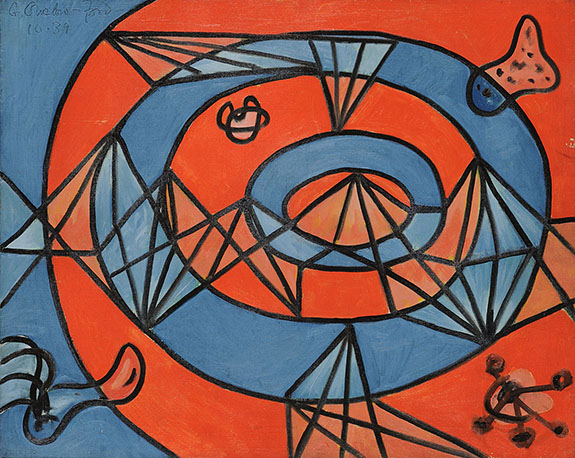 |
Peggy Guggenheim was famous for many things, including mismatched earrings. Her taste for opposites also extended to her infatuations with surrealist automatism ala Joan Miró, and its more austere partner, geometric abstraction ala Mondrian. Together, they represent Ms. Guggenheim’s “twin allegiances” to what she thought to be the most important movements in modern art, but also prompted the question of what a synthesis of the two might look like. Certainly, Jackson Pollock’s pre-1944 work might serve as one answer to that question, but there were many other notable artists barking up the same tree at the same time. One is Gordon Onslow-Ford (1912-2003), who is remembered as the youngest and most recently anointed “official” member of Andre Breton’s surrealist group, and the only one who could speak English fluently. As such, he was invited to come to New York in 1940 to give several lectures about the movement at the New School of Social Research in 1941.
This proved to be a momentous invitation, as Onslow-Ford had been given special dispensation to stray from his wartime obligations as a British navel officer to give those lectures, absenting himself from a warship that would soon be sunk by a German submarine. Soon thereafter, he decamped for Mexico when New York buzzing with talk of war, became overcrowded with European emigrés and abstract expressionists. After spending five years in Oaxaca he arrived in San Francisco in 1947. The fact that Grace McCann Morley gave him a solo exhibition at the San Francisco Museum (not yet the San Francisco Museum of Modern Art) little more than a year after his arrival is testament to the influence that a letter of introduction from Ms. Guggenheim could exert. And the title of that exhibition, Toward a New Subject in Painting, would speak volumes about Onslow-Ford’s ambition to create works that could “transcend self-consciousness” and reveal a world of pure spirit.
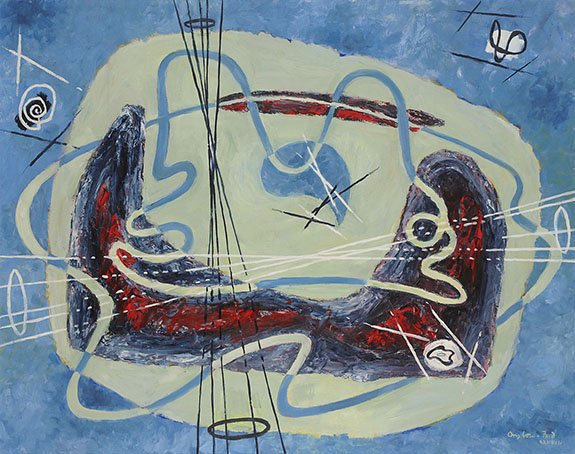 |
It would serve as a guidepost for the many subsequent phases of Onslow-Ford’s career, all of which took place in northern California, first in San Francisco, and then aboard an old ferryboat called the Vallejo that was docked in Sausalito, and finally, after 1957, in Inverness, where he lived and worked on a large forested estate that he purchased at that time. He lived and worked there until his death in 2003.
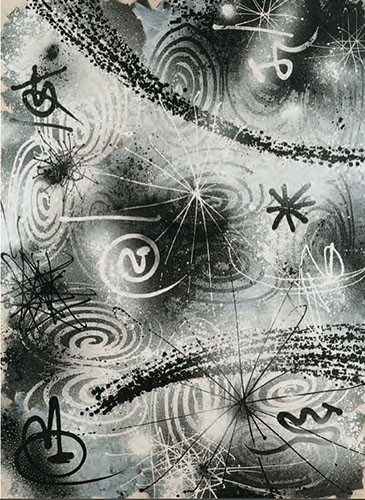 |
In 1951, Onslow-Ford again exhibited at the San Francisco Museum of Art in an exhibition called Dynaton, the title of which was taken from the journal Dyn (Greek for “the possible”), edited by the Austrian painter Wolfgang Paalen whom he met in Mexico. Including work by Paalen, Lee Mullican and Onslow-Ford’s wife Jacqueline Johnson, that early exhibition was one of the very first that had a catalog with color reproductions. It complicated the commonly held notion that Clyfford Still was the one who brought advanced abstract painting to San Francisco, although Still no doubt would have scoffed at the spiritual ambitions of the Dynaton artists. Another notable feature of Onslow-Ford’s work from this period is the artist’s use of oscillating bands of color to suggest the almost electrical energization of a picture space configured as a complex circuit. A good example is No Time from 1950.
It is worth mentioning here that Onslow-Ford’s decade on the Vallejo was a transformative period that was rich in social influences. He shared the floating studio with the surrealist collage artist Jean Varda, and visitors to the boat included the likes of Roberto Matta, Henry Miller and Alan Watts. Japanese calligraphy artists Sabro Hasegawa and Hodo Tobase came to the boat and taught Onslow-Ford the techniques of painting on mulberry paper with sumi ink, and this exerted an inestimable influence on the subsequent development of his work. Soon after the Dynaton period, we see Onslow-Ford’s style moving toward a more confident and casual lyricism, and his paintings from this period abandoned oil on canvas in favor of casein on mulberry paper. The exhibition under consideration here has only a few works from the Dynaton period, but quite a few of the subsequent casein works such as Wild Time (1953), which show the artists seeking a balance between sheer spontaneity and disciplined focus. They also reveal the emergence of Onslow-Ford’s belief that the essence of the visible world could be expressed through configurations of dots, circles and lines, creating a principle that would guide all of his subsequent work, even as it owed much to Wassily Kandinsky’s similar postulation about points, lines and planes.
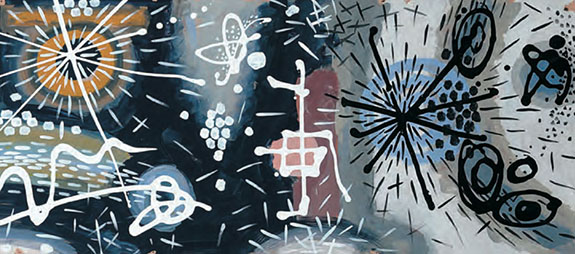 |
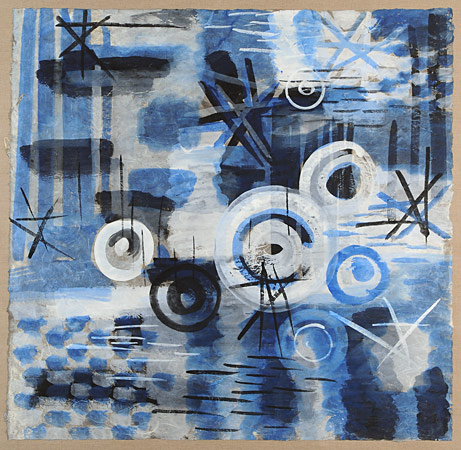 |
Over time, Onslow-Ford pared his pallate down to a smaller range of fewer and fewer colors, gradually favoring the use of white paint set against grey and black grounds. He also switched to acrylic paint, after going through a period of using a water-based material called Parle’s pigment, which emphasized the penumbral luster of the artist’s white ideograms hovering above black fields, galvanizing their allusion to the “white light” of spiritual